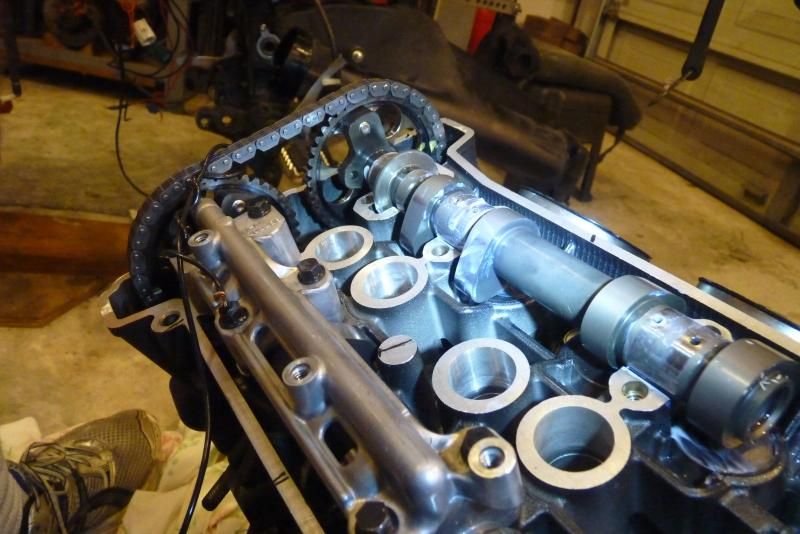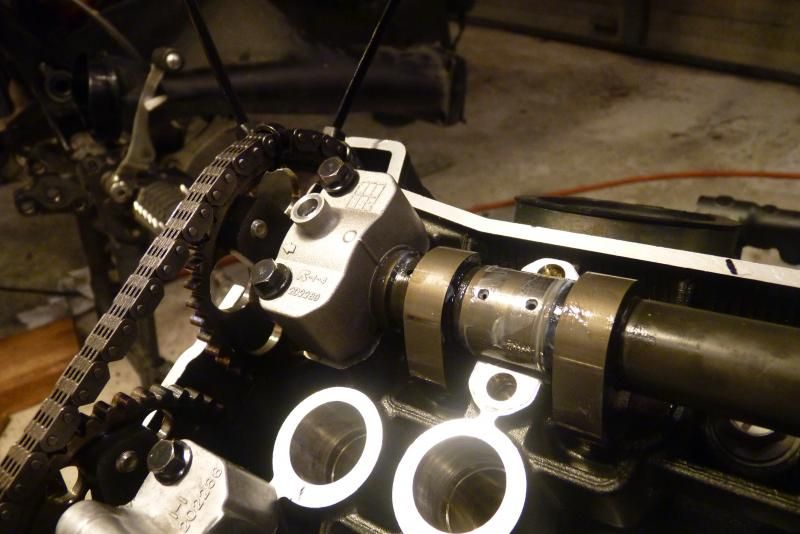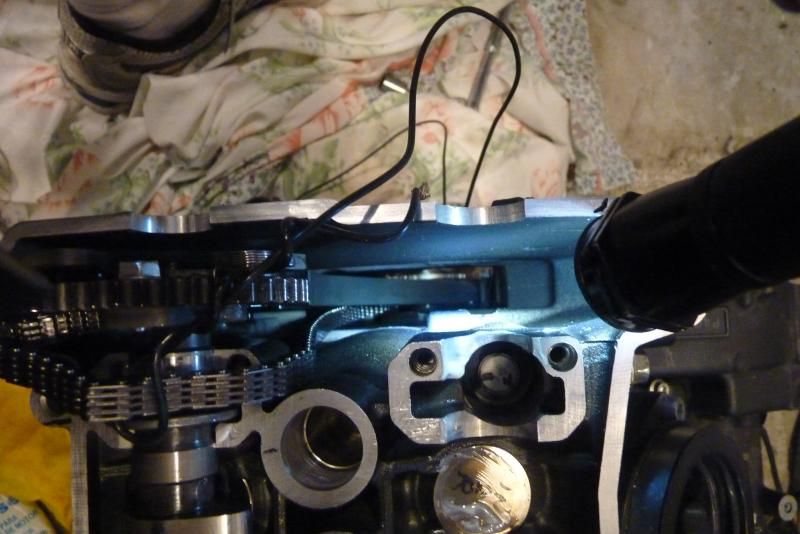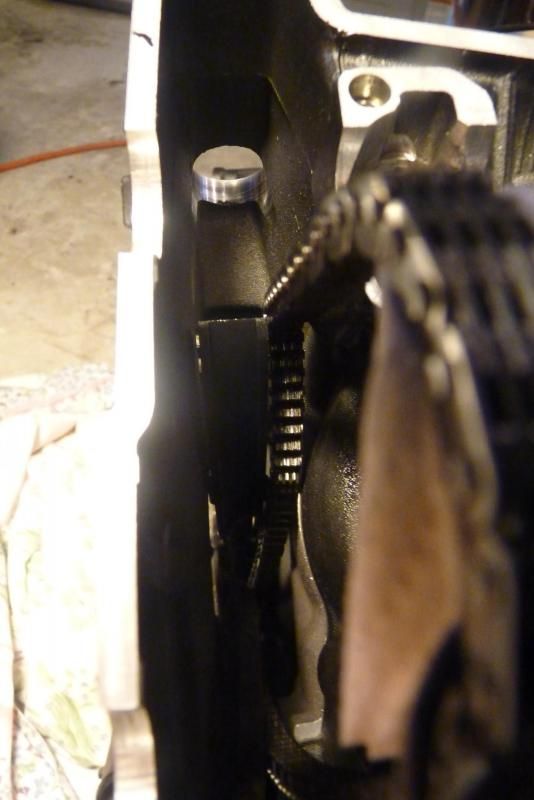Thought after doing a valve adjustment I could add a bit more to this thread. Bike is a 2012 with 81,000 km and has always run well. I had checked the valve clearence at 50,000 km and found a few of the valves were near the minimum, so I knew I would probably need an adjust this time around. Clearances before the adjustment were Exhaust: .009-.008-.008-.008. Intake: .005-.005.005.004.thousandths. Clearance after adjustment Exhaust: .010-.010-.011-.011. Intake: .006-.006-.006-.006 thousandths. The Hotcams shim kit dosent have the finer range of shim thickness that Yamaha uses from the factory. Managed to use most of the removed exhaust shims for the intake settings. The new settings are at the large end but should allow a good while before they need to be adjusted again.With the factory shop manual in hand, I got down to it .
As a plan B to double check my work I put a few witness marks on the intake and exhaust sprockets and the lower cam chain drive sprocket to chain and timing marks. Green tape is just a reminder to check the bolt holding the pick up rotor as I had it off to replace the cam chain while in there. As the cam chain is reasonably priced at around $25.00 I took the opportunity to replace it as it was easy to do once you are doing a valve adjust.
I ended up having to use 2 zip ties to stop the chain from jumping when I was reinstalling the intake cam. I think the first zip tie I tried wasn't tight enough or stretched and it jumped a tooth in the final tightening of the cam caps on the first try.
Here is where the witness marks paid off as during the final tightening of the intake cam cap bolts on the first try, I heard the "click" and could see right away the chain had jumped a tooth. I can see how a valve adjust could go sideways here if you didn't recheck all the timing marks as the chain still appeared to be tight between the cam sprockets and looked good to go. As a side note the cam chain also jumped a tooth when I removed the tensioner when the engine was set to the correct timing marks for cam removal. Something to watch for if you are just replacing the cam chain tensioner.
Removing the valve lifters was a little easier with the help of some strong magnets which also helped keep the valve adjusting shims in place on the underside of the lifter when removing it.
Another tip is to put a small rag down in the cylinder head in the front, middle of the exhaust cam where there are two oil drain holes that would love to swallow up a valve shim if given the chance.
Witness marks moved from the old chain to new for re installation
Difference in length between the old and new chain. New chain is the bottom one. Chain replacement at this mileage is not really necessary based on the small amount of wear seen here. As others have reported it looks like it would be good to at least 160,000 kms.
Had a good look at the front and rear chain dampers and there was no sign of wear from the cam chain.
Took this pic. to show that it is important to make sure the intake cam cap alignment dowels are properly located before you tighten down the caps or as it has been reported you can damage them. Just had a little moly grease on there to make sure there was no chance of binding.
Started it up and after a few cycles of the fan hooked up the Harmonizer and found a small imbalance
A little adjustment to the left hand throttle body air screw and good to go.
A lot of credit goes to the others that have posted there findings after doing a valve clearance adjust. Was a big help when my turn came.
And one last note regards resetting the cam chain tensioner. I have had the 2014 one installed now for about 20,000 km and no more chain noise on start up. This time it was a bit more of a challenge to reset it before installation. I ended up taking it apart and removing as much oil from the internal parts, then with it screwed to a small board and my battery drill on low speed I managed to get the plunger back in and ready for install. Was a fair bit harder to do than the 2012 one I had removed a while back.


















